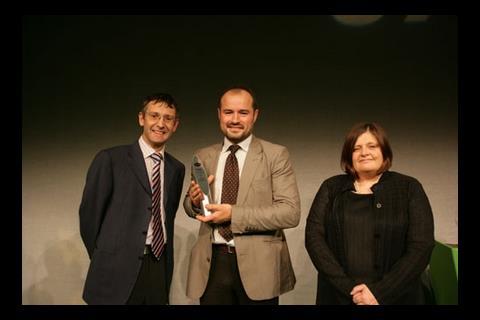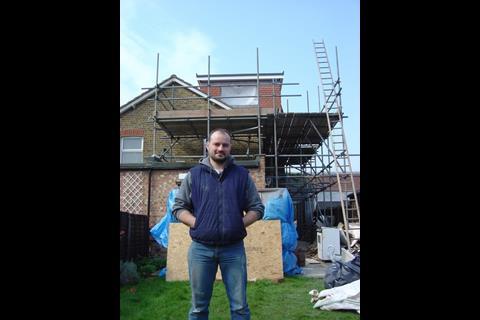Winner
Parity Projects
This Carshalton Grove Eco-Renovation development could have been considered as near impossible to develop sustainably. An inefficient three-bedroom semi-detached Victorian house built in 1890 there is also no south facing roofs to easily utilise solar power and the interior had no cavity walls to easily insulate. A challenge that Parity Projects founder Russell Smith has tackled head on, finding solutions to tackling the existing estate that are both innovative and replicable.On paper, the house will provide a 75% reduction in carbon emissions and an encouraging 60% reduction in water use. The project encompassed eight different types of insulation from sheep wool to recycled newspaper and cotton hemp. Solar thermal roof panels, energy efficient appliances, rainwater harvesting and recycled and locally sourced materials maximised the eco-friendly potential of the property. Perhaps most importantly, Parity installed thermocouple monitoring system for each room to check the environmental effectiveness of the measures to provide invaluable data for future projects. For more details on this project go to The Carshalton case study
Highly commended
Generation Homes: Woodfields Radical Energy Refurbishment project
In a very tightly fought category the judges singled out the work of consultants ESD on this bold refurbishment project as well worthy of commendation.The firm teamed up with Drum Housing Association in 2006 to renovate existing social housing stock to vastly increase its energy efficiency and achieve the Energy Saving Trust benchmark of ‘Generation Homes’. The scheme is a bold attempt at making a concerted effort to tackle the existing housing stock.Six dwellings in Kingsley, Hampshire were refurbished to deliver carbon emissions savings of 60%. Tests on completion of the project in March 2007 showed a reduction of 75% in emissions from 9.8 tCO2/yr to 2.5 tCO2/yr. Energy saving systems used include: waste water heat recovery, ground source heat pumps – delivering a coefficient of 3.0–3.5 for space heating and about 2.0 for hot water - solar photovoltaic panels, cavity wall insulation, loft insulation and full double glazing. Pressure testing post-refurbishment has shown air leakage rates of 4.5 m3/m2/h (bungalows) and 5.5/4.5 m3/m2/h (houses) (at 50Pa); significantly below the Building Regulations of 10m3/m2/h.
Runners-up
Stanhope
Stanhope took on the massive project of refurbishing the under-performing Grade II listed Unilever UK headquarters and successfully delivered an inspiring energy efficient building. The team not only focus on the sustainable design and operation of the renovated building, but demonstrated the desire to reduce carbon emissions throughout the construction phase with the site office being entirely equipped with furniture and equipment from Unilever House.Recycled material was used in the blockwork, steel reinforcement and other ferrous metal components. The firm also used eco-friendly products such as Marmoleum instead of regular floor vinyl and eco resin in counter and furniture fascias. The building featured high performance facades, improved natural lighting and a new heating system which is now run on ultra-low NOx boilers. To reduce the carbon footprint of the company even further, Stanhope integrated state of the art video conferencing centres to reduce need to fly to meetings. All these measures and more led to a carbon usage of 15.99kg C m 2 /y which is 22%better than the building regulations for a refurbished building and 13.5% better than our target.
Partners for improvement in Camden
Working in partnership with Rydon Construction Limited, the consortium Partners for Improvement in Camden (PFIC) transformed the five tower Chalcots Estate’s 717 flats in the London Borough of Camden.The £150 million project incorporated new insulated roofs, self cleaning windows, high efficiency condensing boilers and spaces for electric vehicle recharging. This contributed a carbon footprint reduction of 178 tonnes per tower block. The waste diverted from landfill totalled 4,260 tonnes, and by not demolishing the building and starting again, a 32,000 tonnes has been diverted from landfill.
Sponsor
Sustainability Awards 2007
- 1
- 2
- 3
- 4Currently reading
Building 99% Campaign Award for Refurbishment
- 5
- 6
- 7
- 8
- 9
- 10
- 11
- 12
- 13
- 14
- 15
- 16
- 17






























